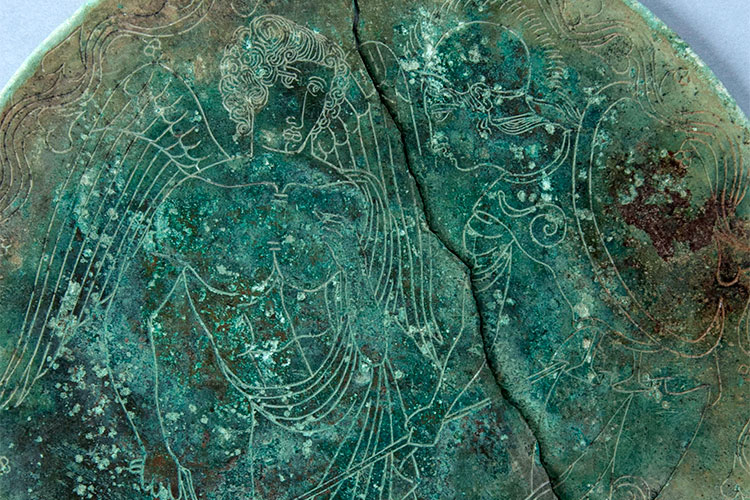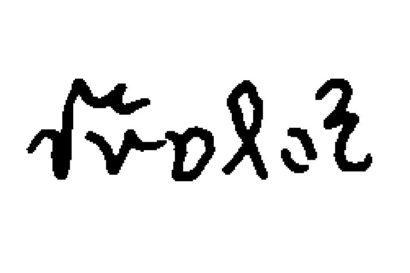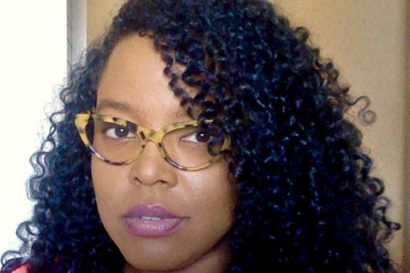History, museum and languages benefit from NEH awards for Berkeley projects
Work on the history of American slavery, rehousing classical artifacts and translating hieroglyphs and other scripts into an international character-encoding standard get a boost

December 15, 2016
The National Endowment for the Humanities has announced awards to support UC Berkeley research on American slavery, rehousing of classical artifacts and translating Mayan and Egyptian hieroglyphs and other scripts into an international character-encoding standard.
Recipients are:
- Assistant professor of history Stephanie Jones-Rogers, who will use her $50,000 faculty fellowship to continue an in-depth study of women, American slavery and the law.
- Benjamin Porter, director of UC Berkeley’s Phoebe A. Hearst Museum of Anthropology and an archaeologist in Near Eastern studies. His $5,700 grant will buy supplies to preserve the museum’s heavily used classical metal collections, which hold some 640 mostly bronze utilitarian objects and more than 3,200 coins.
- Deborah Anderson, a researcher in UC Berkeley’s linguistics department who is directing the Script Encoding Initiative, will use $207,000 in research and development funds and a $67,000 matching grant to extend work for the proposed transfer of historic and minority scripts into the universal computing standard for character representation.
Details of their work follows.
American slavery, women and the law
Historians have long argued that a series of 19th century laws known as married women’s property acts were really meant to preserve family wealth and to shield it from unscrupulous and fiscally inept husbands. Not so, says Jones-Rogers.
Her research into white women’s connections to — and investments in — American slavery shows that married, slave-owning women routinely and successfully petitioned local courts to protect their property rights and to help them secure or maintain control over enslaved people, even at their husbands’ expense.
In addition, Jones-Rogers says, records show that during the Civil War, Confederate officers in Southern states hired enslaved people to work on forts and the military paid the slaves’ owners, including female slave owners.
In an interview with KPFA public radio’s Against the Grain program earlier this year, Jones-Rogers discussed how white American women in the 1800s actively bought and sold slaves and could reclaim slaves from “free states.”
Her sources include formerly enslaved people’s testimony, slave traders’ papers and legal documents, financial records, travel writing, illustrations, newspapers, city and business directories, military documents and other narrative materials.
Jones-Rogers plans to complete a book based on her research.
Unicode project
Anderson says the NEH funding will support work on Mayan and Egyptian hieroglyphs, and African, Albanian and East and Southeast Asian scripts, as well as the creation of a font for the historic alphabets of ancient Italy, which have been lacking.
For scholars who work with materials in historical scripts, encoding is essential in order to build digital collections of texts in their original scripts and to be able to use digital tools to explore them.

This script shows part of the unique alphabet developed by the inventor of the Albanian language, Vequilharxha. (Photo courtesy of Michael Everson.)
Having a minority language script in the universal character set promotes native-language education, universal literacy, cultural preservation, and removes linguistic barriers to participation in computing, researchers say. For historic scripts, they contend it makes communication easier and opens online education, research and publication possibilities.
The project has already worked on unencoded Greek papyrological signs, Early Dynastic cuneiform, Palmyrene, Balinese, Javanese and Linear B, which predates the Greek alphabet by several centuries.
“Wherever possible,” said Anderson, “I contact the leading scholars who are working on the scripts and their languages. On Egyptian hieroglyphs, I am working with UC Berkeley Egyptologist Barbara Richter in Near Eastern studies, for example.”
Saving the classics
At the Museum of Anthropology, NEH funds will cover the costs of such essential supplies as trays, padding, silica gel and polyester sleeves. The items will protect the classical collections’ metal objects, which are being rehoused in new, more protective storage cabinets. The money also will pay for photographing and scanning the objects during their transfer.
The collections’ utilitarian as well as decorative objects were purchased primarily in Italy by Alfred Emerson around 1900 for the museum’s founder, Phoebe Apperson Hearst. Among the items are lamps, vessels, braziers and spits, weighing scales, mirrors, jewelry and statuettes of all kinds.
The collections also feature two complete coin hoards from Ptolemaic Egypt, along with their original cloth bags, issues from major Persian and Greek civic and royal mints and Roman republican and imperial coins that together span three continents and 1,000 years.
“These collections provide a fascinating window into everyday life in Etruscan and Roman Italy,” says Jane Williams, interim head of collections and conservation at the museum. “The imaging and preservation measures funded by this grant will make them fully available for teaching, research and exhibition, both online or in our newly renovated gallery.”
The National Foundation on the Arts and the Humanities Act of 1965 created the National Endowment for the Humanities as an independent federal agency. It is one of the largest funders of humanities programs in the country.
Altogether, its grant announcement this week covered 290 projects set to receive a total of $16.3 million.
